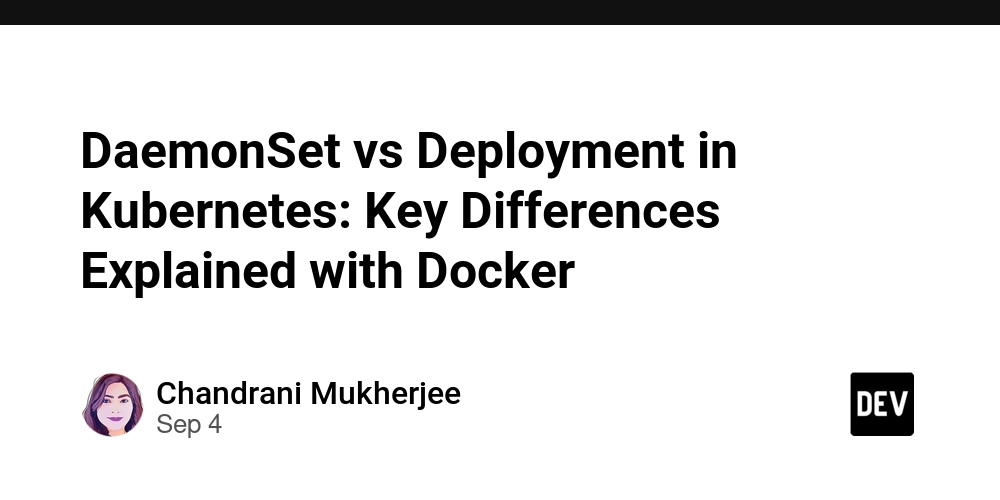Kubernetes DaemonSet vs Deployment: Key Differences
Kubernetes provides multiple ways to run workloads on clusters, with DaemonSet and Deployment being two commonly used controllers. While they may seem similar, they serve different purposes and are optimized for distinct use cases.
What is a Deployment?
A Deployment in Kubernetes is used to manage a set of identical Pods that can be scaled, updated, and rolled back. Deployments are ideal for stateless applications like web servers, APIs, or backend services.
Key Features of Deployment:
- Ensures a specified number of Pod replicas are running at any time.
- Provides rolling updates and rollbacks.
- Pods can be scheduled on any available node in the cluster.
- Great for horizontally scalable workloads (scale up/down easily).
Example Use Cases:
- Running a web application backend.
- Hosting a stateless API service.
- Running multiple replicas of a machine learning inference service.
What is a DaemonSet?
A DaemonSet ensures that a copy of a Pod runs on every node (or specific nodes) in the cluster. DaemonSets are generally used for workloads that need to run cluster-wide.
Key Features of DaemonSet:
- Ensures one Pod per node (or per selected nodes using selectors/taints).
- Automatically adds Pods when new nodes are added to the cluster.
- Removes Pods when nodes are removed.
- Used for node-level agents or monitoring/logging solutions.
Example Use Cases:
- Running a logging agent (e.g., Fluentd, Logstash) on each node.
- Running a metrics collector (e.g., Prometheus Node Exporter).
- Running a CNI plugin for networking.
- Running a storage daemon on each node.
DaemonSet vs Deployment: Side-by-Side
| Feature | Deployment | DaemonSet |
|---|---|---|
| Pod Placement | Runs Pods on any nodes as scheduled | Runs one Pod per node |
| Scaling | Scales horizontally with replicas | Automatically matches cluster nodes |
| Updates | Supports rolling updates & rollbacks | Supports rolling updates |
| Use Case | Stateless apps, scalable workloads | Node-level daemons, monitoring, logging |
| Node Awareness | Not tied to node count | Strongly tied to cluster node count |
How is this Related to Docker?
Both DaemonSets and Deployments ultimately run containers, and most commonly these containers are built from Docker images.
- Pods in Kubernetes are wrappers around containers. The container runtime (historically Docker, now often containerd or CRI-O) actually runs the container.
- A Deployment ensures that multiple replicas of your Docker container (e.g.,
nginx:latest) are distributed across the cluster. - A DaemonSet ensures that one instance of your Docker container (e.g., a log shipper or monitoring agent) runs on every node.
- When you
kubectl applya Deployment or DaemonSet, Kubernetes pulls the specified Docker image and runs it inside Pods according to the controller’s rules.
In short:
- Docker (or another container runtime) provides the container packaging and execution.
- Kubernetes controllers like Deployment and DaemonSet decide how, where, and how many times those containers should run across the cluster.
Summary
- Use a Deployment when you need scalable, stateless applications that can run on any node.
- Use a DaemonSet when you need a per-node agent or service (like logging, monitoring, networking, or storage).
- Both are built on top of Docker images (or OCI-compatible images) that package the application and dependencies.
`# Save updated file
output_path = “/mnt/data/daemonset_vs_deployment_with_docker.md”
with open(output_path, “w”) as f:
f.write(markdown_content)
output_path`



